New products at Crocus
by Sarah - July 9th, 2010.Filed under: Crocus, New Products.
New items at Crocus
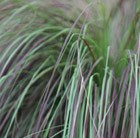
love grass £8.99
Position: full sunSoil: medium to light, poor to moderately fertile, well-drained soilRate of growth: average Flowering period: August to SeptemberHardiness: hardyA Beautiful mound-forming perennial grass with arching leaves that turn wine-red as they mature. In late summer and early autumn it produces masses of grey, nodding spikelets. A fabulous new ornamental grass that looks great grown in a sunny border. It copes well with drought once established and the flowers look lovely in dried flower arrangements.Garden care: Cut to the ground in early spring. Divide plants between mid-spring and early summer.
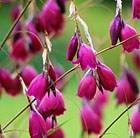
angels fishing rod £8.99
Position: full sunSoil: humus-rich, well-drainedsoilRate of growth: slow-growingFlower Colour: variable, from pale to rich, magenta pink and even occasionally white Flowering period: June to AugustHardiness: frost hardy (needs winter protection)A distinctive-looking perennial with arching stems of bell-shaped, pale pink to magenta or occasionally white flowers that hang above clumps of grass-like, mid to grey-green leaves, retained all year. The stems look delicate, but are actually very tough and appear to tremble in the breeze. Angel’s fishing rod is perfect for introducing movement to a well-drained border in a sunny, sheltered site, orfor overhanging water. Initially slow to establish, it looks particularly good with early autumn-flowering ornamental grasses.Garden care: Water freely during the growing season. Lift and divide congested colonies in spring.
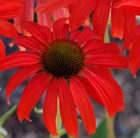
coneflower £8.99
Position: full sunSoil: most soils, except very dry or boggyRate of growth: average Flowering period: June to September Flower colour: bright tomato redOther features: excellent cut-flowers; toothed, dark green leaves; attractive to butterflies and beesHardiness: fully hardyThis vigorous, recently introduced cultivar produces bright red flowers up to 12cm across on upright, branching stems. These appear for a long period from midsummer and are very appealing to all kinds of wildlife. If you remove the spent flowers as they fade it will encourage lots more to follow, and therefore prolong the display well into autumn.Garden care: Lift and divide congested colonies in autumn or spring. In autumn cut back all dead flower stems to the ground.
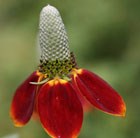
mexican hat £7.99
Position: full sunSoil: dry, well-drained, neutral to slightly-alkaline, moderately-fertile soilRate of growth: average Flowering period: June to September Flower colour: deep claretOther features: excellent cut-flowers; hairy, greyish- green leavesHardiness: fully hardyCurious, deep red flowers with reflexed petals and prominent, domed centres appear from June to September. This summer-flowering perennial is perfect for the front of a sunny, well-drained border, gravel garden or wildflower meadow. Drought-tolerant and easy-to-grow, the slender branched stems are excellent for cutting.Garden care: Lift and divide congested plants in spring.
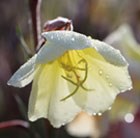
Chilean evening primrose £6.99
Position: full sun or light shadeSoil: poor to moderately-fertile, well-drained soilRate of growth: average Flowering period: May to September Flower colour: creamy yellowHardiness: fully hardyReliably flowering for many months, this showy evening primrose may be short-lived, but it usually self-seeds very freely, so you will get plenty of new plants in subsequent years. It produces large, pale yellow, almost cream flowers that will open in the evening and fill the air with their incredible, heady scent. Native to rocky slopes in Chile, it is very tolerant of poor soils and is generally very easy to grow.Garden care: Protect the young foliage from slug damage using beer traps or environmentally-friendly slug pellets.It is worth keeping in mind that these plants are short-lived so although they usually self-seed freely, the plant will usually only live for a year or two.
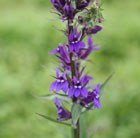
lobelia £6.99
Position: full sun or partial shadeSoil: moderately fertile, humus-rich, well-drained soilRate of growth: averageFlowering period: July to SeptemberHardiness: fully hardyA taller cultivar with pronounced tubular, violet-purple flowers, and dark green foliage, that can often become infused with red. This is an architectural plant, which is ideal for adding vertical interest towards the middle or back of the bed.Garden care: Divide large clumps of plants every second year in spring. Protect the crown of the plant during winter with a thick, dry mulch.
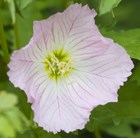
showy evening primrose £6.99
Position: full sunSoil: poor to moderately-fertile, well-drained soilRate of growth: average Flowering period: May to June Flower colour: pinkOther features: the flowers are highly attractive to butterflies and beesHardiness: fully hardyClusters of large, fragrant, saucer-shaped, pink flowers opening during the day in late spring and early summer, filling the air with their heady scent. This vigorous, undemanding plant spreads by underground runners to forming dense mats of low-growing foliage. Evening primrose is excellent towards the front of a sunny border where it can spill over and soften the edges of hard landscaping. It’s best planted in poor to moderately fertile, well-drained soil.Garden care: Once established it can be hard to get rid of, so make sure you plant it somewhere it has room to spread. Divide over-large clumps in spring. Protect the young foliage from slug damage using beer traps or environmentally friendly slug pellets.
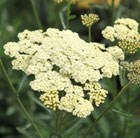
yarrow £6.99
Position: full sunSoil: moist, well-drainedRate of Growth: fast-growingFlowering period: August to OctoberFlowers: creamy white with an apricot flushOther features: fern-like grey-green leavesHardiness: fully hardy The name translates to ‘Moon Pagoda’ which gives you an indication of how the luminous, creamy-white flowers, which are flushed with apricot, really glow. They are set off perfectly by the grey-green foliage and are renouned for holding their colour. The flowers are larger than your average achillea, and they tend to come later, so it is a great plant for adding much needed late summer colour. A wonderful plant that is a recipient of the Award of Garden Merit.Garden care: Achilleas do not like wet soil, especially in winter. Stake if necessary using bamboo canes or brushwood before the flowers appear. Cut down to the ground in late winter, but resist the urge to do this earlier, as the seed heads look lovely in the winter light. Pull out seedlings as they appear, as they rarely match the parent plant. Lift and divide large clumps in late autumn or early spring.

knapweed £6.99
Position: full sunSoil: well-drained, preferably poor soilRate of growth: fast-growingFlowering period: June to OctoberFlower colour: ruby redOther features: the flowers are loved by butterflies and beesHardiness: fully hardyA rarer form of knapweed, which has large feathered foliage and tall, upright stems that are topped with showy, thistle-like flowers throughout summer. A native of the mountainous meadows in the Carpathians, it will thrive in most well drained soils as long as it gets lots of sun. Plant it with ornamental grasses for a wilder look, or place it towards the back of a mixed or herbaceous border for long-lasting interest. Garden care: Stake with bamboo canes or brushwood before the flowers appear. Deadhead regularly to prolong flowering. In autumn resist the temptation to remove the faded flowerheads as the subsequent seedheads are really attractive in winter. Lift and divide large clumps every three years in spring.
feathertop £6.99
beard tongue £6.49
pink £6.49
feld pink £6.49
Californian poppy £5.99
granny’s bonnet £5.99
pink £5.99






